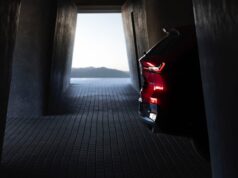The current Hyundai Elantra debuted at the end of 2010 making it one of the oldest models in the compact sedan segment, but thanks to Hyundai’s Fluidic Sculpture design language, the Elantra doesn’t look its age. The segment continues to be dominated by heavy hitters like the Toyota Corolla and Honda Civic, but even as the curtain is about to be closed on the current generation Elantra, is it even worth checking out?
The current Hyundai Elantra debuted at the end of 2010 making it one of the oldest models in the compact sedan segment, but thanks to Hyundai’s Fluidic Sculpture design language, the Elantra doesn’t look its age. The segment continues to be dominated by heavy hitters like the Toyota Corolla and Honda Civic, but even as the curtain is about to be closed on the current generation Elantra, is it even worth checking out?
When the current generation Elantra debuted at the end of 2010 it debuted with the same stylish design language as the larger Sonata. The Elantra immediately stood out compared to the stale (at the time) Corolla and aging Civic. Today both the Corolla and Civic have newer designs than the Elantra, but that doesn’t matter. The Elantra still holds an amount of style that other rivals have yet to attain. The Elantra Sport’s LED headlights and alloy wheels with black inserts are anything but boring.
Inside the Elantra’s interior has held up well as well. The same sculpted exterior design language has made its way into the interior, giving the 2015 Elantra a stylish interior that is more interesting to look at than the Corolla’s horizontal design layout. Our Elantra Sport came standard with features like heated leather seats, push button start and easy to use navigation system and a moonroof. The space in front is ample, but taller passengers in the rear may complain that it’s not as roomy as some of the Elantra’s rivals. The Elantra only offers 33.1-inches of rear leg room, which is much less than the 41.4-inches the Corolla offers.
There is one area where the Elantra is showing its age – its short list of available tech features. Many of the Elantra’s competitors now offer features like a head-up display, blind spot warning systems and more advanced navigation systems. This area will likely be addressed when the next-generation Elantra debuts later this year.
Related: Hyundai Confirms New Tucson and Elantra for 2016
How does it drive? The standard Elantra makes due with an adequate 145-hp 1.8L four-cylinder, which is more powerful than both the standard engines in the Corolla and Civic. If you step up to the Elantra Sport, you’ll be greeted with a more powerful 2.0L four-cylinder that generates 173-hp and 154 lb-ft. of torque. Elantra Sport buyers can choose between a six-speed manual or six-speed automatic transmission. Our tester was equipped with the six-speed automatic, which will obviously be the more popular choice.
Around town the Elantra Sport was zippier than you might expect in a small compact sedan. The Elantra Sport’s revised steering calibration, thicker front stabilizer bar and sportier suspension tuning were also welcome additions. The six-speed automatic shifts smoothly, but isn’t particularly sporty. When pushed hard, the 2.0L engine does sound a bit less refined as its revs climb, but overall packs enough oomph to accelerate on the highway.
The Elantra Sport is rated at 24 mpg in the city and 35 mpg on the highway with the six-speed automatic and 24 mpg city and 34 mpg highway with the manual transmission. During our week with mixed highway and city driving we averaged 30 mpg.
2015 Hyundai Elantra Sport
Base price: $21,600
Price as Tested: $24,735
Pros: Stylish exterior, quiet interior, classified as a midsize sedan
Cons: Tight back seat, 2.0L engine gets a bit buzzy as the revs climb, safety tech features












